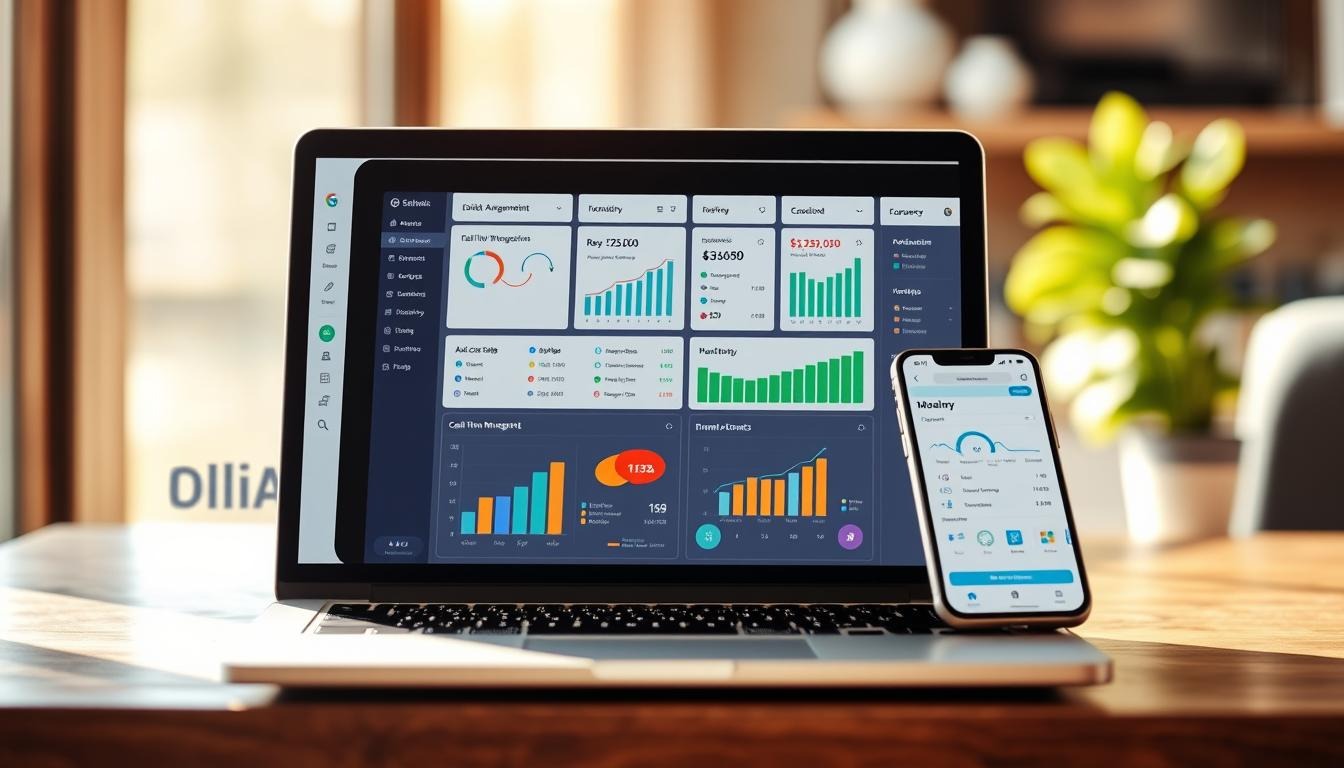Integrated Treasury Management System with AI-Powered Insights
In today’s fast-moving financial world, businesses can no longer rely on traditional, manual treasury operations. They need real-time visibility, smarter forecasting, and instant decision-making. That is where an integrated treasury management system with AI-powered insights comes in. It transforms how businesses manage cash, investments, liquidity, and risk, helping finance teams move from reactive to proactive management.

This blog explores everything you need to know about an integrated treasury management system, how AI enhances its performance, and why it is essential for modern businesses.
What is an Integrated Treasury Management System?
An integrated treasury management system (TMS) is an advanced software solution that centralizes and automates a company’s financial and treasury operations. It connects multiple financial functions such as cash flow management, liquidity planning, investments, foreign exchange, payments, and risk management into one unified platform.
Unlike traditional systems that work in silos, an integrated TMS brings together all financial data sources like bank accounts, ERP systems, accounting platforms, and other financial applications into a single dashboard. This provides finance teams with a clear, real-time view of the company’s financial health.
When combined with artificial intelligence (AI), the system becomes even more powerful. AI-driven treasury systems can analyze massive amounts of financial data, detect patterns, and generate actionable insights that help in strategic decision-making.
Why Businesses Need Integration in Treasury Operations
Many organizations still operate with disconnected financial systems. For instance, cash management might happen in one tool, while foreign exchange operations or reconciliations are done in another. This fragmented approach leads to inefficiency, manual errors, and poor visibility.
An integrated treasury management system eliminates these issues by providing:
- Centralized financial control: All treasury functions operate through one platform.
- Real-time visibility: Continuous monitoring of cash, liquidity, and investment positions.
- Improved accuracy: Automated data synchronization minimizes human error.
- Faster decision-making: Instant access to analytics and dashboards supports timely financial decisions.
This level of integration helps businesses move faster and more confidently, ensuring smoother cash flow and stronger financial stability.
How AI Enhances Treasury Management
Artificial intelligence is the game-changer in treasury management systems. It takes financial automation to a whole new level by adding predictive and cognitive capabilities. Let’s understand how AI makes a difference.
1. Predictive Cash Flow Forecasting
AI algorithms analyze historical data, payment cycles, and spending patterns to predict future cash positions. Instead of relying on spreadsheets or manual estimates, businesses can now forecast with greater accuracy.
2. Automated Reconciliation
AI can automatically match transactions from multiple sources such as banks, ERP systems, and payment gateways. This saves countless hours for finance teams and ensures every transaction is accounted for.
3. Risk Management and Fraud Detection
AI systems continuously monitor financial activities for unusual patterns or anomalies. They can flag potential frauds, currency risks, or compliance breaches in real-time, helping organizations stay secure and compliant.
4. Smart Liquidity Optimization
AI insights help businesses determine the best way to allocate excess cash, invest in short-term instruments, or reduce borrowing costs. This ensures funds are always used efficiently.
5. Automated Reporting and Insights
AI-powered dashboards automatically generate comprehensive financial reports and analytics. These reports provide deep insights into cash positions, liquidity trends, and performance metrics, helping CFOs make informed strategic decisions.
Key Features of an Integrated Treasury Management System with AI
An advanced treasury management system that integrates AI capabilities typically includes a wide range of features designed to simplify operations and strengthen financial control.
- Centralized Cash Management: Offers a single, consolidated view of all accounts and balances across banks and regions.
- Real-Time Data Integration: Connects with ERP systems, banks, and accounting software for accurate, up-to-date data.
- AI-Powered Forecasting: Provides data-driven cash and liquidity predictions to guide better financial planning.
- Automated Payment Processing: Streamlines domestic and international payments with built-in approval workflows.
- Advanced Risk Management Tools: Monitors market, credit, and operational risks using real-time analytics.
- Reconciliation Automation: Matches transactions automatically to ensure financial accuracy.
- Compliance and Audit Controls: Tracks every financial movement to maintain audit readiness and regulatory compliance.
- Interactive Dashboards and Reports: Offers real-time visibility into key metrics with customizable visual analytics.
- Multi-Entity and Multi-Currency Support: Ideal for businesses operating across multiple countries or subsidiaries.
- AI-Powered Recommendations: Suggests optimization actions based on trends and data patterns.
Benefits of an AI-Integrated Treasury Management System
Implementing an integrated TMS with AI brings both immediate and long-term advantages for businesses of all sizes.
1. Real-Time Cash Visibility
Finance leaders gain complete transparency into the company’s cash position across all accounts, currencies, and subsidiaries. This helps them make quick funding or investment decisions.
2. Improved Decision-Making
AI insights help treasury teams identify cash surpluses, risks, and inefficiencies. They can make data-backed decisions rather than relying on intuition or outdated reports.
3. Enhanced Efficiency and Productivity
Automation eliminates repetitive tasks like reconciliation, reporting, and data entry, allowing finance teams to focus on high-value activities such as strategy and analysis.
4. Stronger Risk Control
AI’s predictive capabilities help identify potential market or credit risks early. The system alerts treasury managers in advance, allowing preventive actions.
5. Better Compliance and Audit Readiness
With digital trails and audit logs for every transaction, compliance becomes easy and transparent. The system ensures adherence to global financial regulations.
6. Cost Savings
By reducing manual errors, optimizing liquidity, and preventing unnecessary borrowing, businesses can save substantial costs over time.
7. Scalable and Future-Ready
An integrated TMS with AI easily scales as the company grows. It adapts to new business models, acquisitions, and changes in market conditions without disrupting operations.
Steps to Implement an Integrated Treasury Management System
Adopting an integrated TMS powered by AI requires careful planning and execution. Here’s a step-by-step guide to ensure successful implementation.
Step 1: Assess Current Treasury Processes
Start by evaluating your existing treasury operations. Identify inefficiencies, manual workflows, and areas where data is fragmented. This helps in setting clear objectives for automation.
Step 2: Define Key Requirements
List out what features your organization needs such as cash visibility, reconciliation automation, risk monitoring, forecasting, or AI analytics. Prioritize functionalities based on business goals.
Step 3: Choose the Right Platform
Select a treasury management system that offers robust integration capabilities, strong AI features, and flexibility. Platforms like Kosh.ai provide automated reconciliation, real-time insights, and seamless integrations with ERPs and banks, making treasury operations smarter and faster.
Step 4: Integrate Data Sources
Connect all relevant financial systems including ERP software, bank accounts, payment gateways, and investment platforms to ensure unified data flow.
Step 5: Automate Workflows
Automate routine processes like reconciliation, payment approvals, and reporting. This reduces manual effort and improves accuracy.
Step 6: Train Your Team
Provide adequate training to your treasury and finance teams. Help them understand the system’s dashboards, analytics, and AI-driven recommendations.
Step 7: Monitor and Optimize
Once implemented, continuously monitor performance metrics. Use AI-generated insights to refine strategies and improve financial outcomes.
How AI is Shaping the Future of Treasury Management
The future of treasury management will be heavily influenced by artificial intelligence and automation. Let’s look at some trends that are already shaping the next generation of treasury systems.
- Predictive Treasury Operations:
AI will help businesses forecast market trends, interest rates, and liquidity positions with high precision. - Self-Learning Treasury Bots:
AI-powered bots will assist in managing transactions, responding to data anomalies, and executing financial tasks automatically. - Integration with Blockchain:
Blockchain integration will enhance transparency, traceability, and security in payments and settlements. - Cognitive Decision Support:
AI systems will not just provide data, they will recommend the best financial actions based on goals and risk profiles. - End-to-End Automation:
From reconciliation to investment management, every treasury function will be fully automated with minimal manual intervention.
These innovations will empower CFOs and treasurers to move beyond operational efficiency and focus on strategic growth and value creation.
Why AI Integration is the Future of Corporate Treasury
Businesses that embrace AI-integrated treasury management gain a competitive edge. They can foresee risks, optimize liquidity, and make informed decisions faster than competitors relying on outdated systems.
The integration of AI transforms treasury from a cost center into a strategic growth enabler. With advanced forecasting, risk modeling, and automation, treasury teams become vital contributors to business success.
Also Read: Treasury Management System: Everything You Need to Know
Role of Kosh.ai in Intelligent Treasury Operations
Kosh.ai is an intelligent financial automation platform that simplifies and accelerates treasury and reconciliation operations. It integrates seamlessly with ERP systems, banks, and payment gateways, providing real-time visibility and AI-driven insights.
With Kosh.ai, businesses can:
- Automate complex reconciliations in under 60 seconds.
- Gain instant cash visibility across multiple accounts.
- Get AI-powered forecasts and anomaly detection.
- Improve reporting accuracy with real-time dashboards.
- Ensure compliance with audit-ready trails.
Kosh.ai helps companies achieve operational efficiency, financial control, and strategic agility, all from a single unified platform.
Conclusion
An integrated treasury management system with AI-powered insights is no longer just a luxury, it is a necessity for businesses aiming to thrive in a data-driven economy. By combining integration, automation, and artificial intelligence, organizations can achieve complete financial visibility, stronger risk control, and smarter decision-making.
Whether you are managing a growing enterprise or a global corporation, adopting an AI-driven TMS can transform your treasury into a proactive, predictive, and strategic powerhouse. With tools like Kosh.ai, the future of intelligent treasury management is already here.
Also Read: Treasury Management Solution: Unlocking Financial Transformation
FAQs
1. What is an integrated treasury management system?
An integrated treasury management system is a software platform that centralizes cash, liquidity, payments, and risk management processes into one unified system.
2. How does AI help in treasury management?
AI enhances treasury management by automating tasks, predicting cash flows, detecting fraud, and providing real-time insights for better decision-making.
3. Is AI integration suitable for small businesses?
Yes, AI-powered treasury systems like Kosh.ai are scalable and ideal for small and medium enterprises looking to improve efficiency and visibility.
4. What are the key benefits of implementing an AI-integrated TMS?
Major benefits include real-time visibility, improved forecasting accuracy, cost savings, automation, and better risk management.
5. How long does it take to implement a TMS?
Implementation time varies depending on the organization’s size and complexity but usually ranges from a few weeks to a few months.
6. What makes Kosh.ai different from other treasury tools?
Kosh.ai stands out with its AI-powered automation, seamless integrations, real-time analytics, and ability to complete reconciliations in under 60 seconds.
Contact us now

.jpg)
.webp)







